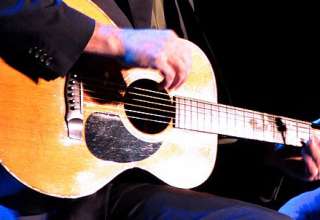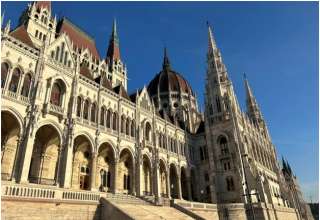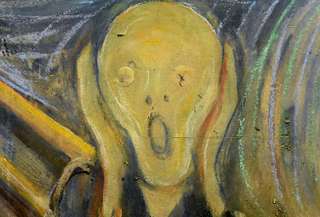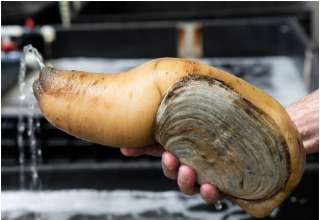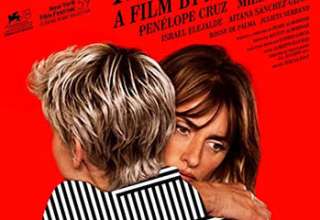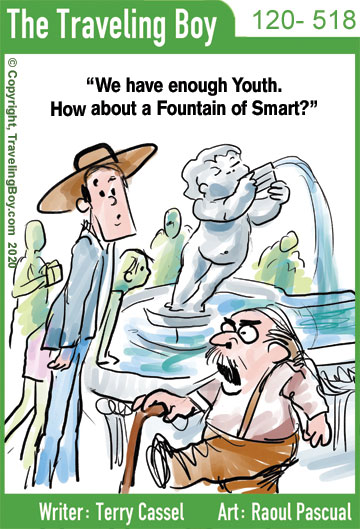Curated by Ed Boitano
The T-Boy Society of Film & Music’s latest poll is dedicated to our Favorite Island Destinations. Like last month’s World’s Friendliest Destinations we’ve decided to continue with another uplifting theme to counteract the horrendous news of today. You’ll find members’ selections to be personal, reflective and educational. I know I did.
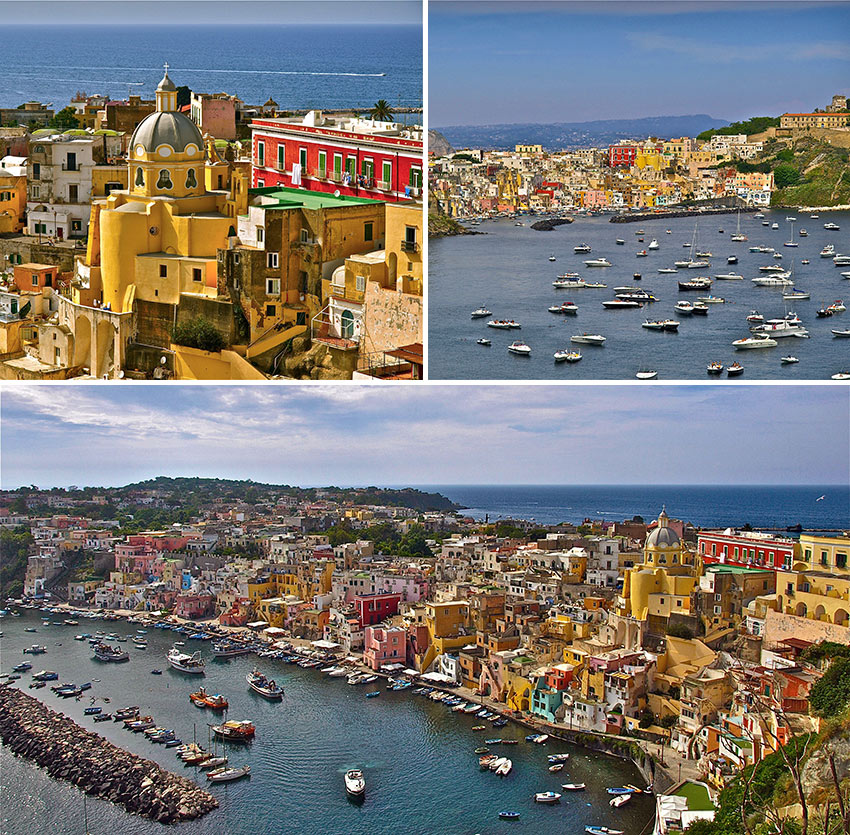
Tom Weber — T-Boy writer:
Procida: The Postman’s Island, Southern Italy: Adored for its simplicity, panoramic views and natural beauty, Isola di Procida, one of a group of five islands that make up the Partenopeo Archipelago out in the Tyrrhenian Sea, just off the coast of Naples in the Campania region of southern Italy, has served as the narrative and backdrop for novelists, screenwriters and moviemakers alike.
Hollywood and Italy’s counterpart Cinecittà (Cinema City) have both yelled out, Lights. Camera. Action! as this little island has routinely been chosen for location shooting on a number of films due to its pastel panoramas and traditional Mediterranean architecture.
The most famous feature-length movies shot on Procida to date are The Talented Mr. Ripley (1999), starring Matt Damon and Jude Law, and Il Postino (The Postman, 1994).
Il Postino tells a fictional story in which real-life Chilean poet and devout Marxist Pablo Neruda is exiled to a small Italian island for political reasons in the early 1950s. An unemployed son of a fisherman is hired on as an extra postman to exclusively hand-deliver the deluge of mail arriving daily to Neruda’s residency.
Over time, the two form a relationship and soon the simple postman begins to love poetry. The postman, falling silently and madly in love with Beatrice, a barista at her aunt’s cafè, enlists Neruda’s help and guidance to express his feelings.
Il Postino stars French actor Philippe Noiret as Neruda, and Italian thesps Massimo Troisi as postman Mario and Maria Grazia Cucinotta as Beatrice.
Sadly, writer-actor Troisi postponed much-needed open-heart surgery so that he could complete the feature, and the day after filming wrapped Troisi suffered a fatal heart attack and never saw the director’s final cut.
Fortunately, Troisi’s capolavoro in Il Postino left behind a memorable and endearing performance for movie fans everywhere to enjoy again and again. He was posthumously nominated for a best-actor Oscar at the 1995 Academy Awards. Il Postino is must-see cinema and ranks right up there with Cinema Paradiso (1989 Academy Award for Best Foreign Language Film), another small budget, Italian classic.
And what about the tiny island of Procida? It’s situated between Capo Miseno and the island of Ischia. Spanning less than 4 sq. km. (2.4 sq. mi.), it has a very jagged coastline. Terra Murata (Walled Earth) is the island’s highest point, topping the horizon at 91 m (300 ft.). Geologically, Procida was created by the eruption of four, now dormant and submerged, volcanoes.
Mycenaeans, Greeks, Romans — who made Procida a patrician resort — Normans and the French laid claim to the island over the centuries. Legend has it that the all-powerful Greek god Zeus exiled two misfits — Cercopes from Ephesus — who enjoyed playing pranks on the gods, to the islands of Ischia and Procida, turning them both into monkeys along the way.
Today, Procida remains an uncomplicated, simple, laid-back picturesque dot in the sea when compared to its vibrant, larger and more popular neighboring islands of Capri and Ischia.
Flourishing gardens, vibrant colors, the fragrance of lemon trees and postcard-perfect views beckon travelers to Procida and its quaint ports. It’s just the kind of charming retreat where a simple postman can while away the days writing poetry to impress and win over the woman he loves.
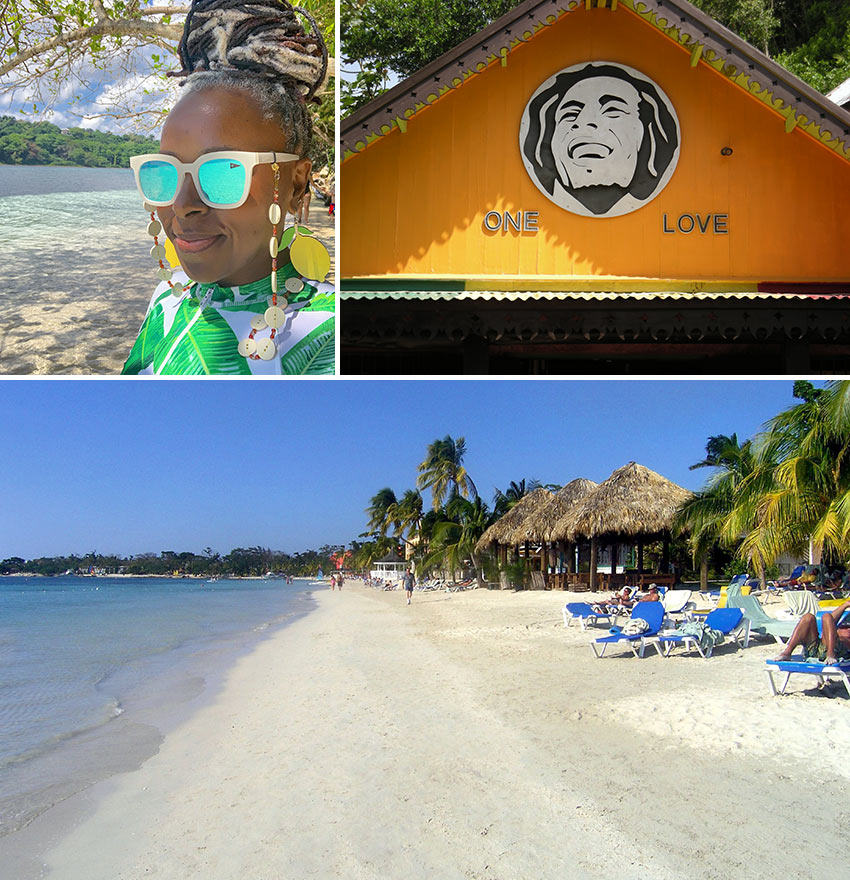
Sarah Greaves-Gabbadon — Jetsetter-in-Chief at Jet Set Sarah:
JAMAICA, LAND I LOVE: I lived in Jamaica for about half my life, but I can’t say I ever loved it the way I do now, from hundreds of miles north. Sometimes, to see a place more clearly you have to venture far away, to put some distance between you, as you would a lover or a childhood friend. But now, after living Miami for 17 years, I feel the thrill that first-time visitors surely must, as the undulating emerald carpet of Jamaica’s dense interior, Cockpit Country, fills the aircraft window. The plane banks to the left to reveal a scalloped coast fringed with talcum sand, thick bush and gray ribbons of highway that have replaced the winding two-lane country roads I used to drive when I lived in Montego Bay.
So, as we begin our final approach, and my memories of the island and its people come flooding back, I wonder what people who’ve never been here before think the country to be like. And I know that whatever their expectations, their experience will be so much more.
That’s because, even among its 30-something other Caribbean siblings, there’s nowhere on earth quite like Jamaica. This tiny island of just over 4,000 square-miles and 2.5 million people has had such a global impact on the world in so many spheres, it’s nothing short of astonishing. I challenge you to find a place in the world where the face of Bob Marley or the strains of “One Love” aren’t instantly recognized and met with a smile. Beyond rum, reggae and coffee (our Blue Mountain brew is acknowledged as some of the finest and most expensive in the world), we’ve given the world our Olympic bobsled team, jerk chicken, and the planet’s greatest sprinter, Usain Bolt.
But it’s what Jamaicans have kept for themselves that’s even more precious. And it’s something I imagine that new visitors, most coming from developed countries where they’re better off materially than many of the people they’ll meet on the ground, don’t anticipate. It’s the magnetism of Jamaicans – an asset that far outweighs the majesty of the 600-foot cascades at Dunn’s River Falls, the mist-crowned Blue Mountains or the seven-mile sweep of sand in Negril.
I saw a T-shirt in an airport duty-free shop once. Printed on the front was the phrase “It’s a Jamaican thing; you wouldn’t understand.” But I understood immediately. Because to be Jamaican is to possess an innate confidence and pride that has nothing to do with your station in life. I can’t explain why, but it seems that every Jamaican is hard-wired with an irrepressible lust for life and unwavering confidence whether they’re living high on the hog or barely making ends meet.
And even though I wasn’t born there, I know that that much of the confidence I possess as an adult comes from growing up in Jamaica, around people who are loud and proud (and yes, as a friend says, sometimes “wrong and strong”) but never ashamed to make their presence felt. It’s a rock-solid sense of self that, like my passport, I take with me wherever I go, a sort of “confidence visa” that can never be revoked.
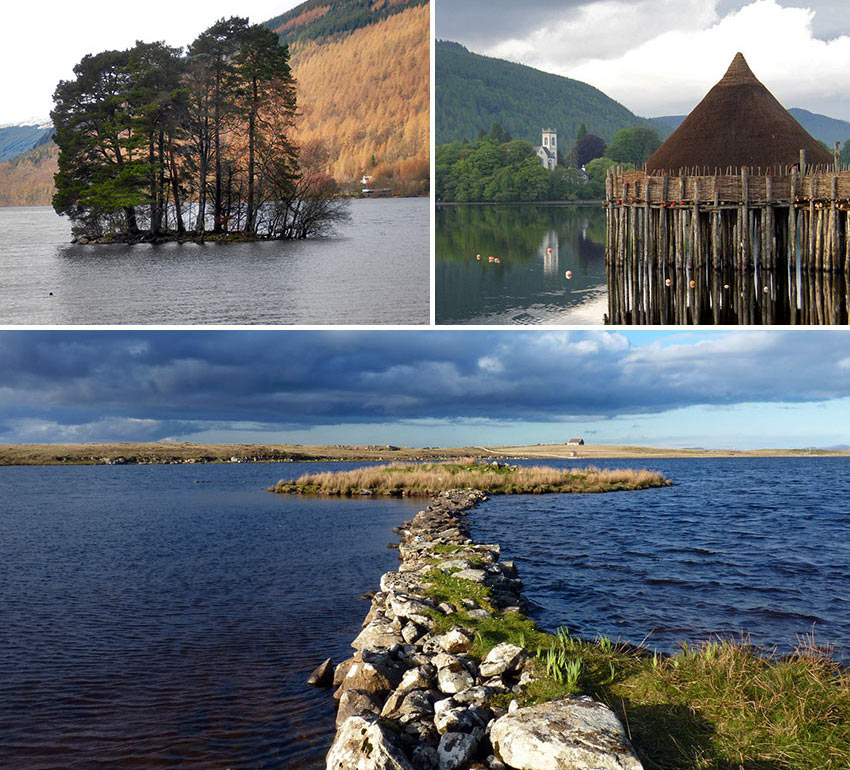
Ringo Boitano — T-Boy writer:
Crannogs, Scotland & Ireland: I couldn’t help but notice the stunning tree-filled islands that dotted Scotland and Ireland’s shimmering lochs. Known as crannogs, they are artificial fortified islands, constructed in a lake or marsh, originally in prehistoric Ireland and Scotland. Research revealed that they once contained Iron Age and even Neolithic dwellings, dating back before the advent of Stonehenge. The surrounding water was their form of defense. In case of an attack by raiders, the inhabitants could easily defend and repel such intrusion. In periods of calm, small boats could transport the crannog dwellers to their farms, while secret, strategically placed underwater causeways, known only to them, would do so by foot. Today, they are many reconstructed crannog dwellings thanks to the Scottish Crannog Centre, created to promote the preservation and interpretation of Scotland’s underwater heritage.
Dominica: There it was in bold print: “Dominica is the only island Columbus would recognize if he returned today.” I’m not sure how the author managed to land that quotation, but even from the deck of my arriving vessel, I could see that this tiny island nation was definitely an untouched paradise found. Located in the Eastern Caribbean, Dominica is blessed with rainforests, undeveloped beaches, cascading waterfalls, small coastal villages with broken sidewalks and the highest mountain on any of the Caribbean’s Islands. In 1493, Dominica was a stronghold of the Caribs, who are today the last indigenous people of the Caribbean. Situated high in the mountains, the Carib Territory is a must-see destination in the northeast part of the country. It is also where some of the most spectacular vistas of the island can be found. With a population of 3,500, most of the Carib people live in huts that have changed little over the centuries. Unfairly categorized by the first arriving Europeans as cannibals, these are a gentle and shy people. Children would hide behind structures when my small group arrived by van. Young men, who were carving coconuts, offered us fresh coconut milk to drink. Today, income is derived primarily from crafts, fishing and farming. It’s a great place to purchase gifts or souvenirs to help the local economy
Church of the Assumption, Lake Bled, Slovenia: The secret to a successful marriage is for a husband to carry his bride up all 99 steps to the Church of the Assumption on the island in Bled, Slovenia. If only someone would have told me about this Slovenian tradition 30 years ago. But after stepping off a Pletna – a gondola-like boat known only in Bled – and staring up the sharp vertical incline, I could see that this would be easier said than done. Located in the Balkan nation of Slovenia in Central Europe, it was once part of the former Yugoslavia, now divided into six autonomous republics. Bled has long been a popular local and tourist destination. Former Yugoslavian head of state Marshal Tito had a getaway constructed on the mainland, overlooking the lake and island. Historians believe that the little alpine forested island probably had a special meaning during prehistoric times as a sanctuary. In the early Middle Ages, it was an Old Slavic cult island, where 124 graves with skeletons were found at the site of the church.
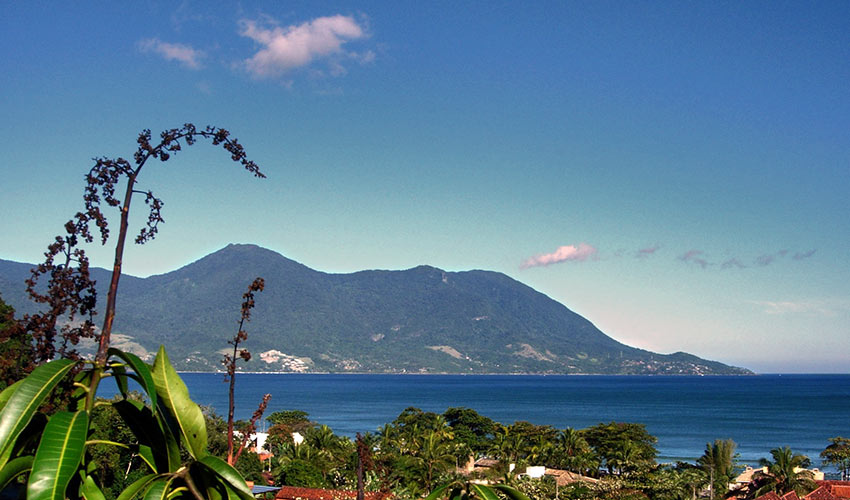
Chloe Erskine — Educator:
Ilha Bela, Brazil: Imagine leaping off a boat, with two dear-to-the-heart friends (made in New York but who are South American natives) at the helm, and gliding through sapphire water in front of a waterfall flowing from the jungle down a cliff into the sea you are swimming in. Welcome to Ilha Bela, literally, Beautiful Island, off the Sāo Paolo coast. This is where Brazilians come to vacation. Let me say that again. This is where. Brazilians. Come to. Vacation. Load your car onto the ferry Seattle style and float 40 minutes off the coast to this abundance of natural beauty, hiking, swimming, standup paddle, feijoada galore, plazas that never quiet, and outdoor clubs with the ocean on the left, pool on the right, and mountains in front. Rent a house or cottage in a hotel on the west side near enough to the beachfront restaurants (which you oh rough life that it is, must frequent if you want beach access but cold beer and fresh grilled seafood all day is a fair and equal price I’d say) and get up around 11, pack the coolers with your own Antarctica beers too in case (light enough for all day sunshine) and get a spot at in the sand in by noon. Stay. Swim. Sun. Flirt. Wander. Rest.
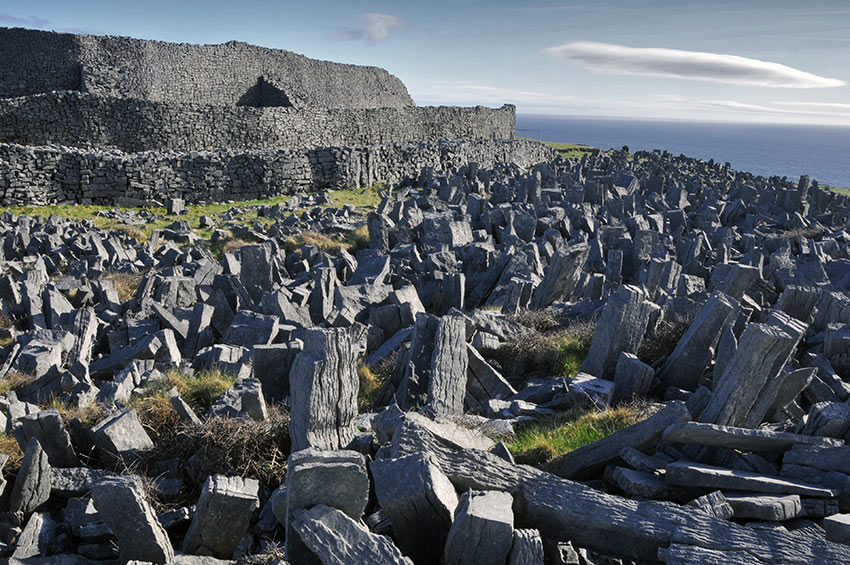
Ed Boitano — T-Boy editor:
The Aran Islands, Ireland: In Robert Flaherty’s brilliant 1934 documentary film, Man of Aran, we see a man smashing limestone rocks to bits, while his wife gathers seaweed below the island’s windswept cliffs. Meanwhile, their young son scavenges for particles of dirt that have blown from the mainland. These three ingredients will be used to create soil to grow potatoes – the family’s main source of subsistence. This is the Aran Islands; a landscape made entirely of solid limestone rock. It is a landscape that is so cruel and unforgiving that this poor Irish family must manufacture their very own soil in order to survive. When Flaherty heard of these stoic people, he knew that someday he would make a film about them. When I first viewed his masterful documentary, I knew that I too would someday set foot on the islands. Twenty years later, I finally did. Located off Ireland’s west coast, the Aran Islanders today no longer create their own soil and tourism is now their largest form of income. Visitors come from all over the globe to experience their living history of primitive stone forts, weathered churches and dramatic scenery. The best way to begin your exploration is at the Ionad Arann Heritage Centre on Inishmore, the largest of the three islands, which takes you back two thousand years in the life and times of the Aran Islands.
San Juan, Puerto Rico: San Juan was a bustling metropolis 100 years before the Pilgrims landed on Plymouth Rock. The island was home to the Taíno Indians when Europe colonization began with the arrival of Columbus in 1493. The Spanish soon established the strategically placed fortress, Castillo de San Felipe del Morro, at the entrance to San Juan Bay. With its 20-foot-thick walls towering 140 feet above the sea, El Morro proved ideal in keeping enemy ships out of the bay. Today this dramatic structure hosts over two million visitors a year who come to explore the fort’s sweeping vistas, tunnels, dungeons, barracks, outposts and canons. Declared a World Heritage Site in 1933, El Morro offers a unique opportunity to experience Spain’s 400 years of history in Puerto Rico.
Stromboli, Italy: Ingrid Bergman plays a displaced Lithuanian World War II refugee in Roberto Rossellini’s 1950 masterwork, Stromboli, who marries an Italian POW fisherman she met in an internment camp. They relocate to Stromboli, her husband’s volcanic island home. Unable to adjust to the harsh environment of the hostile people and landscape, she attempts to flee, by walking to the other side of the island to a waiting boat. As she climbs the active volcano, she is awed by its power and furry, losing her battered suitcase and then her pride, eventually breaking into tears and calling for God. Seeing the little island of Stromboli from the luxury of the 360 feet long and five mast vessel Star Clipper was a slightly different experience. I could see smoke pouring like clockwork out of the crater, and the two small villages below, with Sea Gypsies hugging the shoreline. Located off the north coast of Sicily in the Tyrrhenian Sea, Stromboli has been in almost continuous eruption for the last 2,000 years. Eruptions typically result in a few seconds of emitting ash and lava fragments, but lava flows do still occur. The last major one was in 2002, resulting in closure of the island. As Stromboli began to disappear in the distance, I stared in awe at the villages of islanders who refused to leave their homes as the black smoke filled the sky.
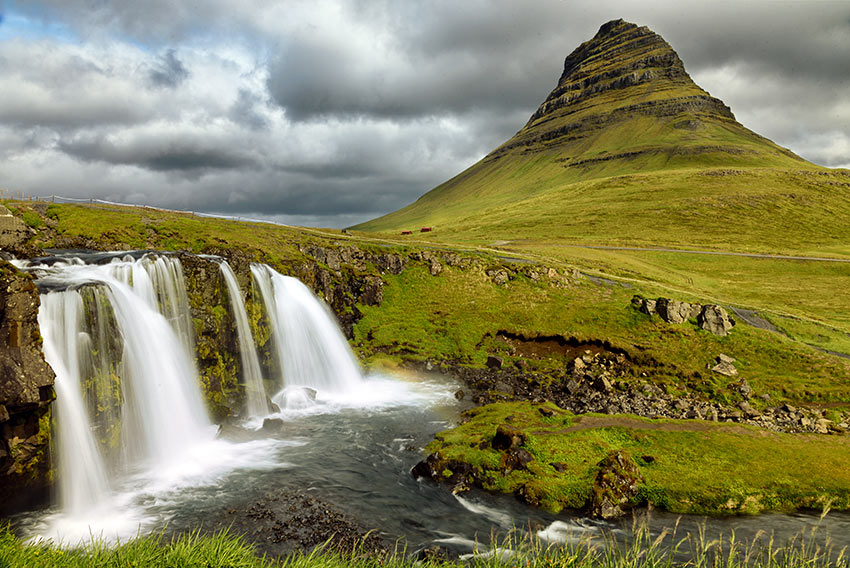
James Boitano — T-Boy writer:
Subarctic: Iceland – A cozy Viking civilization built upon amazing volcanic and glacial geology
Temperate: Vancouver Island – High Tea in Victoria. Raw Pacific Beaches in Tofino
Tropical: Dominica – Caribbean culture, welcoming people, volcanoes and black sand beaches.
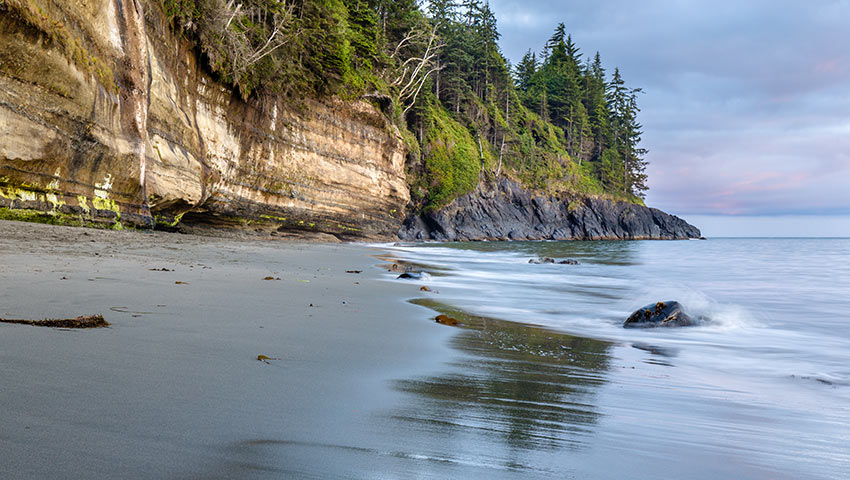
Weave Cleveland — Cinematographer Travel Guys TV:
Vancouver Island, British Columbia, Canada: I grew up on Vancouver Island (Sooke) and I am not trying to be prejudiced. I have travelled to a fair amount of locations on this planet and if I told you what I have seen on Vancouver Island you would not believe me: Bears • Salmon Runs • Sharks • Orca • Blue Whales • Grey Whales • Sperm Whales • Abandoned Gold Rush Towns • Caves • Impressive Waterfalls • ENORMOUS Douglas Fir Trees • Ship Wrecks • Mining Towns • Gorgeous Beaches • Rainforest Glory • Military Exercises in the mountains • Deer in the cities • An abundance of eagles- Bald and Golden • Immense sustainable logging and smart forestry management – trust me, the loggers I know, know more about an owls habitat than you would ever suppose, these are smart educated people • The best camping you will ever experience • The best hiking trails – make your own trail – me and my dog did plenty of that • Feral cats in the deep woods • Warm lakes, deep lakes, cold lakes • Hippies – I mean real humans still living off the land raising their families (paying no taxes) • US draft dodgers living in the woods growing quite old, untrusting of amnesty • Skates washed up on the beach • Shark jaws to take to class for show ’n tell • An Indian midden (indigenous) • Fishing industry culture • Race tracks • Soccer leagues • World-class educational institutions • Celebrities • and as much to offer as any other home on the planet.
But let me tell you this: what you see above the surface of the water is nothing compared to what is immediately below. Whatever you think you like about the BC Coastline; well, just wait until you get a look at what is underneath. I am dead serious, if you could see what I have seen you would think you are on a different planet, one of immense colourful abundance. I ain’t even gonna’ start. Coral reefs, eat your heart out!
Moorea, Polynésie Françoise: This island is just north of the island of Tahiti. It is the most beautiful place you could imagine. We swam with black tip sharks; they don’t bite people. The sting rays are as gentle as puppy dogs and as trusting as a child.
Huahine, Polynésie Françoise: Paradise. Mārō’ē Bay. Amazing and gorgeous.
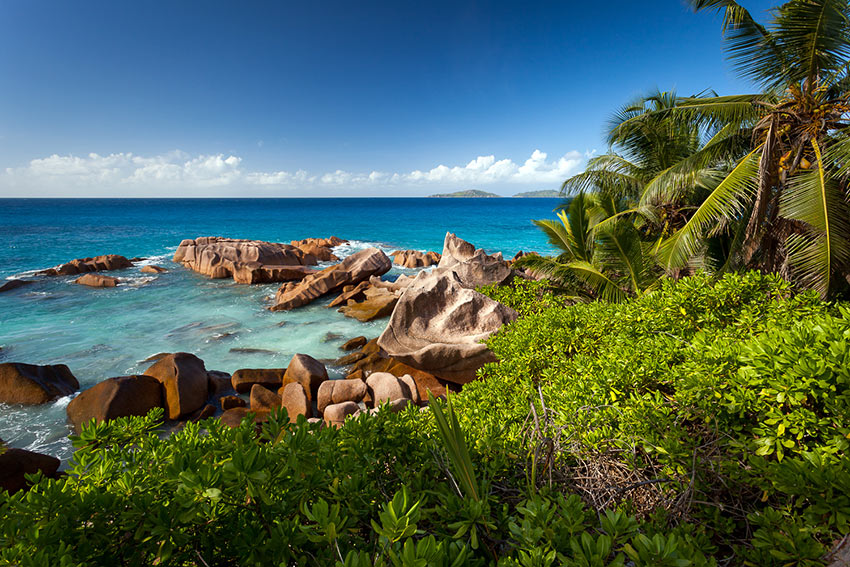
La Digue, Seychelles: The Seychelles has shown up on Viking maps as the Garden of Eden. (Those Vikings sure went a long way). A century ago, it was a place they used to dump prisoners. It seems like paradise, which it is, but I recall sitting on a beach, looking out to sea feeling like I was on the very edge of the earth. It was the loneliest feeling you could imagine. A very far away feeling. Can you imagine having a white sandy beach all to yourself with just you and your lover, for an entire day – absolute paradise? It is shockingly lonely. I went out into the bay and when I was at chest level, I noticed hundreds of small white fish swimming all around me, I hadn’t noticed they were there until… all of a sudden. I swam out into the deeper water and let the swells take me way up and way down as I watched the shoreline. What a place! It has to make my list because I can never forget it.
Haida Gwaii, Graham Island, The Queen Charlotte Islands: I spent a month in Massett playing music in a bar. It too, felt like the edge of the earth but with the capability of being much more violent from mother nature. Golden eagles the size of your house. Clams the size of a catcher’s mitt. I watched eagles in the trees above a wide cove takes turns diving down to try and catch a fish. What a show. I went to the northern tip of the island and walked out on a rocky edge only to see nesting seabirds freaked out that I was there intruding on their nesting place. Wow!
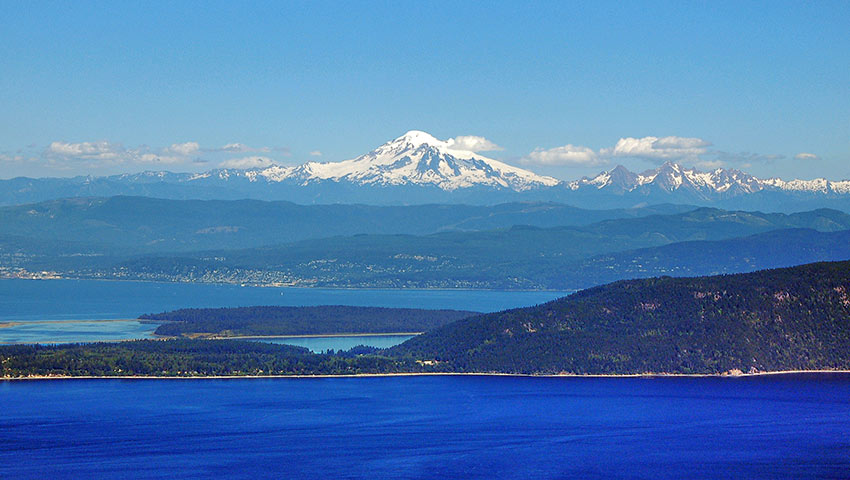
Brent Campbell — Musician & composer:
Orcas Island, Washington State: When I was seven or eight years old, and for the next two summers, I went door to door selling toffee covered nuts for $1 per can (delicious!). Once I sold 20 I earned a one week trip to YMCA Camp Orkila on Orcas. After all these years I still cherish those three “independent “ trips to one of the most beautiful islands anywhere. I have been back a few times over the years and Orcas Island remains a beautiful locale.
Rivillagigedo Island, Alaska: Home to Ketchikan. In my college years I spent a summer working on a few construction projects. Arriving at midnight on 7/4 I was introduced to 20 hours of light. I was introduced to the great state of Alaska.. (it remains much lighter in Fairbanks, over a thousand miles north). I learned to live in a place only accessible by sea or plane. I learned to love Alaska (where I was working before the pandemic).
Kauai, Hawaii: I have been to all of Hawaii except the big island and Kauai is my favorite. It’s been a few years but I will never forget the beauty of the Garden Isle. Great beaches and scenic diversity. Less tourism (I can’t vouch for today). I simply remember it as paradise on earth!
Great Britain: Need I say more. The island that is home to England, Scotland and Wales is probably the most important, impactful, influential island on earth. All other islands pale by comparison (sorry Australia you are a small continent by most measures).
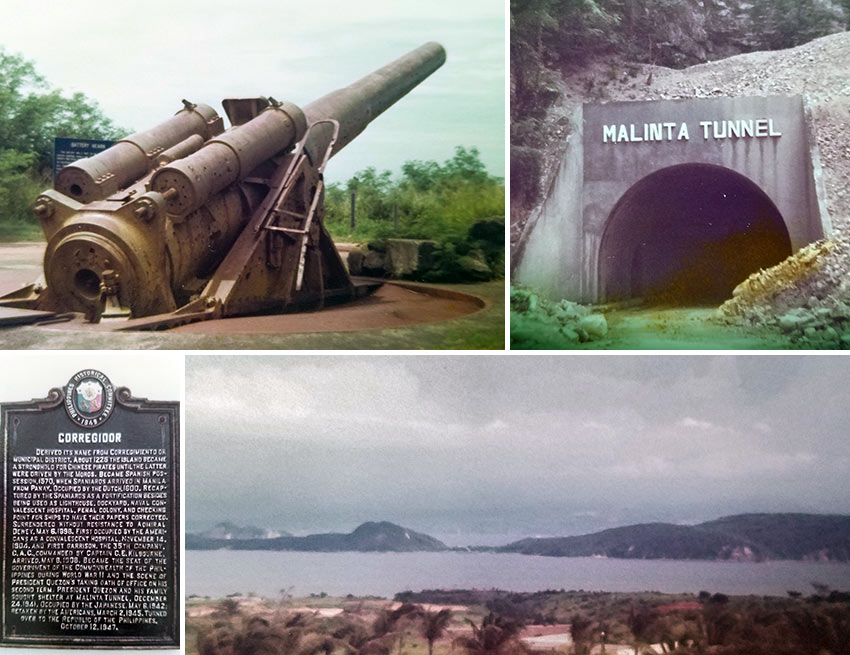
T.E. Mattox — T-Boy music critic:
Japan: A cultural experience like no other. The people, the history, the architecture, the incredible train/subway systems. Inland you have mountains and hot springs (onsen). Nikko National Park is breathtaking. With so many things to try and experience, plan for at least two weeks when you visit.
Hawaii: Oahu will always be a favorite. I’m a history buff and Pearl Harbor stopped time for me. Standing above the deck of the USS Arizona, watching a silvery sheen of oil that continues to leak from the depths. Heart-wrenching and unforgettable!
Corregidor: Not an intact structure on the entire island. The most-bombed piece of ground on the planet. The Malinta Tunnel carved through a mountain on the island, had a 1000 bed hospital inside.
Hong Kong: Probably a little different today. But in the day, the food was outstanding on the floating restaurants. Great place to have clothes tailor-made. Sailing around the island in a Chinese junk is a lifelong memory!
La Maddalena: Off the West coast of Italy and a ferry ride North of Sardinia. Beaches are magnificent, terrain is rocky, but the seafood and pasta is to die for. Sambuca.
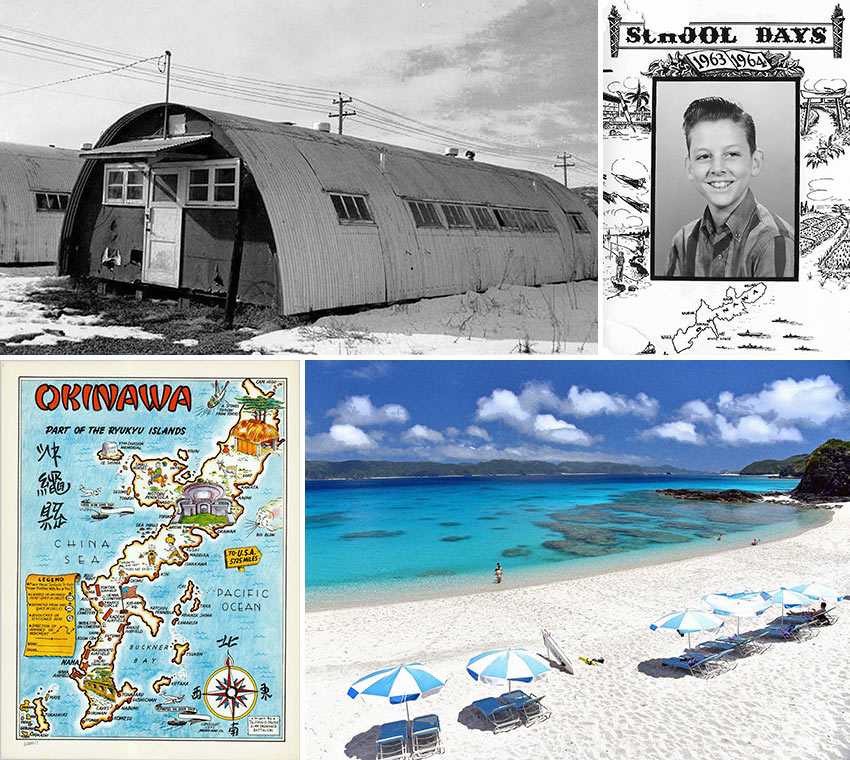
Allan Smith — Artist & T-Boy writer:
Memories of Okinawa, Japan: My favorite island is not a usual tourist destination. It is a distant memory of my youth. My father was a US military chaplain, and we moved about every 3 years. In 1961 (when I was eight years old) we moved to Okinawa, the largest island of the Ryukyu Islands, about 950 miles south of Japan. The inhabitants of Okinawa speak Japanese and have much in common with their neighbors to the north.
Some six decades have passed since I lived there, but I still have fond memories from the few years of my youth spent on Okinawa. Attending 3rd and 4th grade in Quonset hut classrooms didn’t really seem unusual to me; it was simply something you might expect for an Army dependent on Okinawa in 1961. I remember a couple of my teachers, and the school library where I volunteered to sort library cards, and the librarian with her shiny long red fingernails. I can remember an animated film my teacher showed near Halloween with dancing skeletons, and some how I know the music they were dancing to was Camille Saint–Saëns’ Danse Macabre.
I remember the village store down the hill from my home: a paradise for a young boy who had a dollar or two to spend. There were exotic candies some of which had edible wrappers that looked like cellophane, but must have been made from rice. My brothers and friends bought long thin firecrackers that didn’t have fuses; you struck the end on a matchbox, and then had 5 seconds to throw the “striker” as far as you could!
There were “butterfly” knives in which the blade was enclosed in a 2-piece handle which came in many different colors. You would undo the small latch at bottom and then deftly flip the top half of the sheath back under your thumb, exposing the blade. It was very exciting for a young lad of 7 or 8.
There were also strange slender playing cards called menko, which you would slap down next to your opponent’s, and try to flip his card over. With each successful flip, you won that card. On the way home from the village shop, I once remember seeing an old mamasan bathing under a waterfall. I admit now that I threw one of my firecrackers in her direction. Of course, she was a far distance off, well out of harm’s way.
Then there were the occasional days off from school when the island was struck by a powerful typhoon, when the power would go out and centipedes would crawl inside the house.
I recall walking in a field of sugar cane, cutting a stalk and sucking the sweet juice. Then finding a clump of clay that I imagined to be an old WWII hand grenade.
I learned some Japanese from a native speaker who visited our elementary school class. I learned numbers and some basic greetings which I’ve never forgotten, such as: Ohayou-gozaimasu (Good Morning ) and ichi, ni, san, shi, go (1,2,3,4,5).
I remember seeing the locals squatting on their haunches as they waited for a bus. I remember hearing about a deadly sport which pitted a feral mongoose against a poisonous Habu snake. I learned how to make fried rice from our part-time Okinawan maid, and also learned to love the smell of incense and appreciate Japanese art and style. (I still watch the NHK television network from Japan, and I love Japanese cinema).
There were white sand beaches, like Okuma, on the northwest side of the island and slippery clay swimming holes surrounded by vines where the Okinawan children would dive and flip to their hearts’ content.
I remember listening to Armed Forces radio hearing the Beatles for the first time, and calling the radio station every half hour to request I Wanna Hold Your Hand... I would use my father’s fancy new Akai reel-to-reel tape recorder to make mix tapes from the radio.
There was also the dark memory of the night I slept over at a classmate’s home. I remember his mother coming into his room in tears, telling us that President Kennedy had just been assassinated. I guess we all remember where we were when we heard that grim news.
These are some my childhood memories of Okinawa. I don’t know if I will ever return there, but it is often in my thoughts.
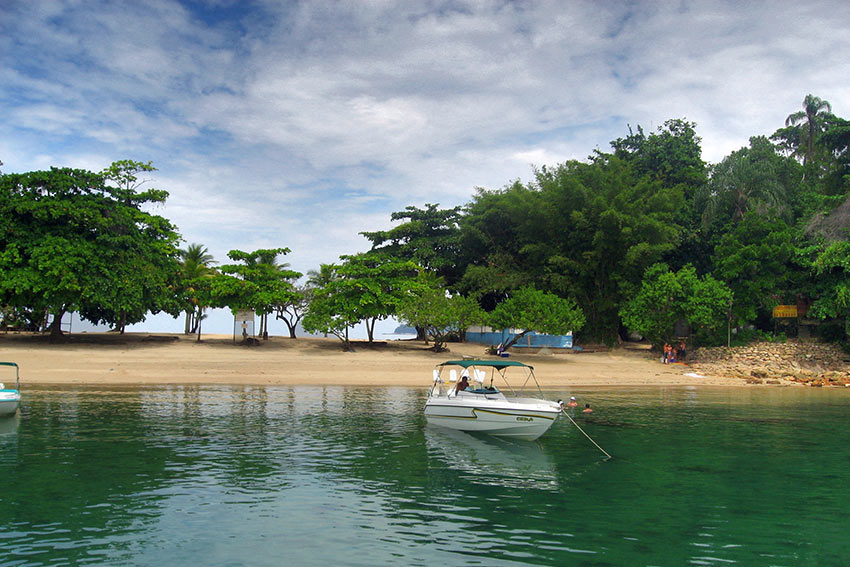
Richard Frisbie — T-Boy writer:
An unknown island in Paraty Bay has to top my Favorite Islands list.
After the hedonism of Carnivale, my friends and I chartered a sailboat to relax for a few days and come down from the nonstop partying. While sailing in the Bay of Paraty, which is off the Brazilian mainland, in the state of Rio de Janeiro, we came upon an island — almost two islands actually — only connected by a sandy, palm tree dotted isthmus. We dropped anchor and I dove from the deck into the emerald sea, swimming toward shore as the color paled and the white sand rose beneath the water to meet my feet. I walked from the beach through the palms and across the green barrier to the opposite sandy shore. With the two hills of the island rising on each side of me I lay down in the warm sand, soaking in the sun, embraced in the bosom of the bay. It was a psychedelic moment.
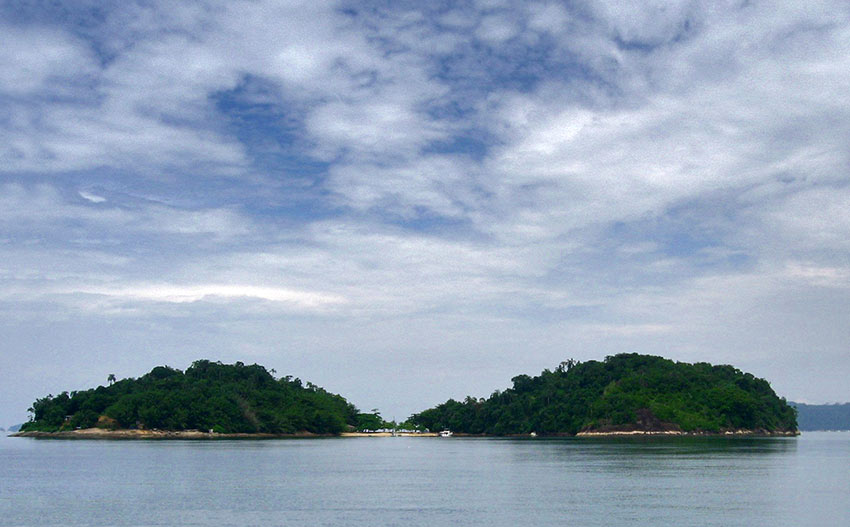
Sardinia — Sicily’s little sister off the Italian coast — is a windswept isle of history, rugged people, and great food & wine. The Bronze age stone shelters, or nuraghi as they are called, dot the landscape. And the last holdout of those ancient builders lived undiscovered for decades high in an old volcano in what looked like a pueblo from our Southwest. There are fine beaches and sailing, and an unexpected warmth from the insular population that I really enjoyed.
After that would come — in no particular order — Macau, Ibiza, Tenerife, and the Thousand Islands of the St Lawrence River.
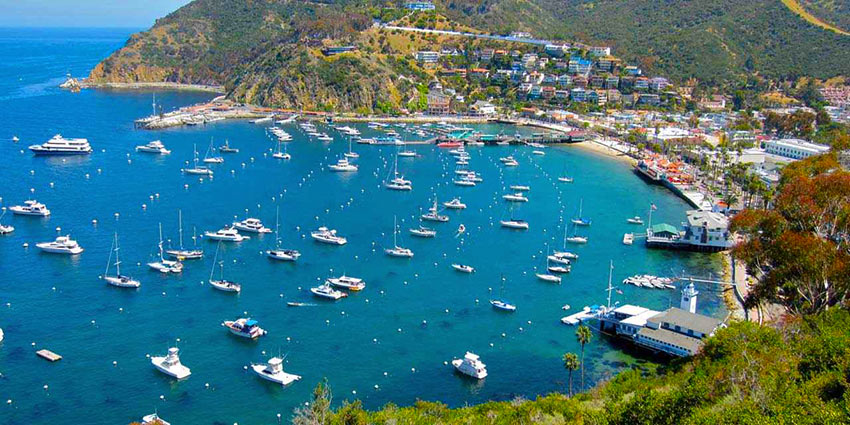
Richard Carroll — T-Boy Writer:
Catalina Island — Catalina Island is an exhilarating 22-mile journey from Southern California to an untrampled paradise. The sea and sky frame a magnificence horseshoe-shaped bay hosting everything from yachts to crusty row boats with fishing rods. Small wooden cottages are surrounded by geraniums, hibiscus, begonias and bougainvillea that seem to be growing out of every nook and cranny. Spanish-style buildings with red tile roofs and stark white walls built in the 1920’s and 30’s and the historic Casino, like a sentinel standing guard, are Catalina landmarks. Strangely, not a single wager has ever been placed in the Casino. William Wrigley Jr. of chewing gum fame who took control of the island in 1919 designed the Casino for dancing. Also, as owner of the Chicago Cubs baseball team, Catalina was their spring training camp from 1921 to 1951.
A million thanks to Wrigley and the Catalina Island Conservancy who established guidelines that continues to keep Catalina free of blatant commercialism. The island is home to at least fifty endemic species and subspecies that occur naturally on the island and nowhere else in the world. Not one traffic light is to be found and generally the resident’s mode of transportation is via golf carts and bicycles. The city of Avalon more like a European village is about one square mile in size leaving 88 percent of the island to nature and miles of overnight hiking trails.
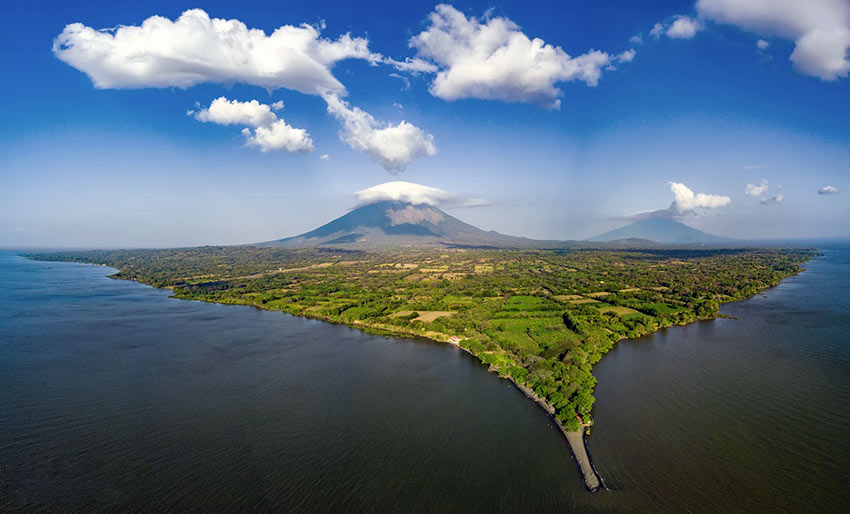
Ometepe, Lake Nicaragua — The volcanic island of Ometepe tucked away in Lake Nicaragua, is the largest fresh water island in the world, dominated by two towering volcanoes, one active. Colorful villages, fields of sugar cane, and fresh-water lagoons where white-faced capuchin howler monkeys hang out is the essence of Ometepe, though those up for a mighty challenge a variety of steep all-day volcano hikes are a lasting memory. The island residents remark, “If the volcano blows jump in a kayak, paddle like heck, and don’t look back.” I found on this remote island in the heart of Nicaragua a bit of Spanish is helpful but a smile and a handshake works every time.
Stephen Brewer — T-Boy writer:
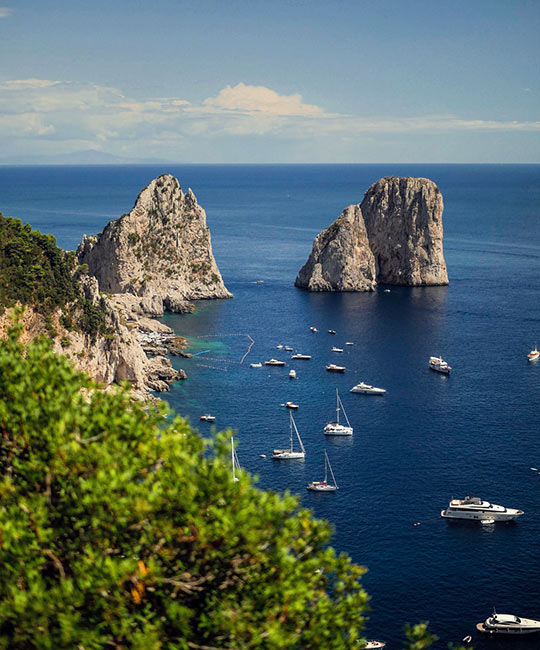
Capri, Italy “Twas on the Isle of Capri… Shall we just get the pleasantries out of the way? Capri is a lovely little island that floats in the turquoise waters of the Gulf of Naples and where the air is scented with bougainvillea that tumbles in wild abandon over the garden walls of white-washed villas. Blah, blah, blah. Not that I’m immune to the natural beauty of this island, and I have enjoyed many long walks beneath pine trees out to Punta Tragara and refreshing dips beneath the sea cliffs at the Faraglioni, but on this rock it’s the human fauna, warts and all, that I find to be especially intriguing.
Capri, you see, has long attracted bohemians, libertines, and the outright scandalous. The novelist D.H. Lawrence grumpily complained that the island was “a gossipy, villa-stricken, two-humped chunk of limestone that does heaven much credit but mankind none at all.” I lean toward amused fascination, not despair, about humankind when I sit in the Piazzetta, the main square of Capri Town. Day trippers troop through, water bottles in one hand, iPhones at the ready for selfies in the other, and alongside them are leggy models who strut around as if on a Milan runway, a scattering of lotharios, easy to spot in rumpled linen, and many well-dressed, cappuccino-drinking bon vivants who might be accountants and marketing execs in real life but in this setting become flaneurs and flaneuses. The writer Joseph Conrad also got carried away with the island’s undercurrents when, quite possibly sitting at a cafe table in this square, he wrote, “The scandals of Capri — atrocious, unspeakable, amusing scandals, international, cosmopolitan, and biblical flavored with Yankee twang and the French phrases of the gens du monde mingle with the tinkling of guitars in the barber’s shops.”
Capri has been synonymous with licentiousness since the Emperor Tiberius took up residence in a cliff-top palace in A.D 26. According to contemporary reports, he engaged in “depravities . . . so flagrant one can scarcely bear to report or hear them.” But since no one can resist passing on some good dish, especially about a public figure, news soon spread that the dark and mercurial emperor was having lovers of whom he’d tired hurled off the cliffs. Another dissolute, the Baron Jacques d’Adelsward-Fersen, took up residence in a villa a little way down the same hillside in 1905. He came to the island after some time in prison for an episode involving schoolboys, and he brought with him his lover, Nino Cesarini, a model for erotic photographs and paintings. The baron spent his time writing really bad verse and almost unreadable stream of consciousness prose, but he excelled at taking debauchery to extremes. He died while sipping cocaine-infused Champagne in a room he had designed to resemble a Chinese opium den. Nino did well for himself after the baron’s death and opened a bar and newsstand in Rome with the money he inherited.
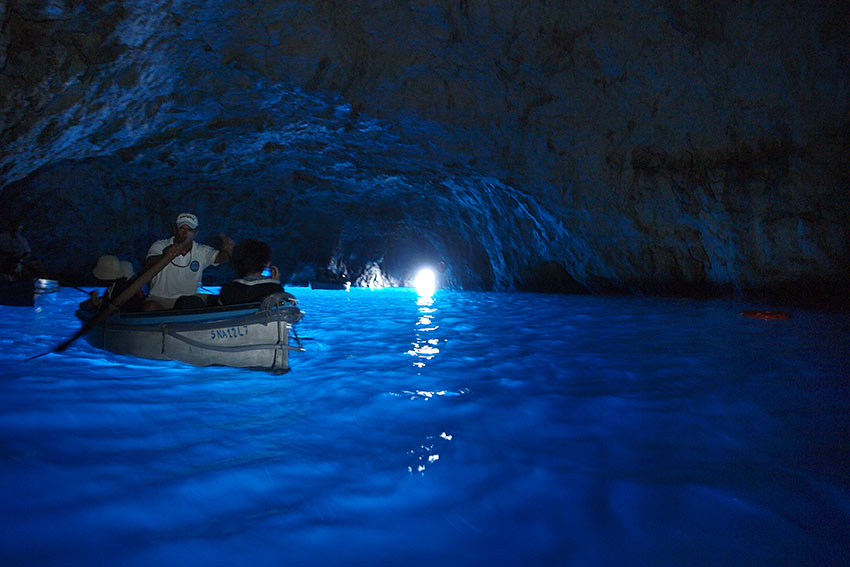
Probably the island’s most famous scandal is the one associated with Friedrich Alfred Krupp, the German steel and arms manufacturer. Money and power could not silence reports of Krupp’s orgies and other dalliances on Capri, and he committed suicide in 1902 when faced with a trial and many years of hard labor. He’s lent his name to the beautiful Via Krupp, a steep lane of switchbacks that connects the Giardini di Augusto, designed and financed by Krupp, with Marina Piccola, where he moored his two yachts. Amidst the garden’s lush greenery stands a statue of Vladimir Lenin. The revolutionary and first premier of the Soviet Union seems a bit out of place in such luxuriant and hedonistic surroundings, but he admired the island when he stayed here as a guest of his co-patriot, the writer Maxim Gorky, in 1908.
It would be easy to go on and on gossip-mongering, but it seems only fair also to mention some island residents who have been above reproach, or almost. Axel Munthe, a Swedish physician and ornithologist, is still the island’s golden boy, having settled into the airy and enchanting Villa San Michele in 1887. Oh, you could dig up a few skeletons in the doctor’s closet, like his lifelong devotion to Princess Victoria (later Queen) of Sweden, to whom he prescribed spending a lot of time in his company on Capri. All in all, though, Munthe is an uplifting character, and he was beloved for some truly altruistic acts, like treating poor islanders for free, coming to the aid of Neapolitans during a cholera epidemic, and taking in a menagerie of stray animals. Plus, he penned some pretty memorable thoughts, like “The soul needs more space than the body.” That will make perfect sense when you take in the views of this legendary island from the airy and light-filled rooms where Munthe spent most of his life.
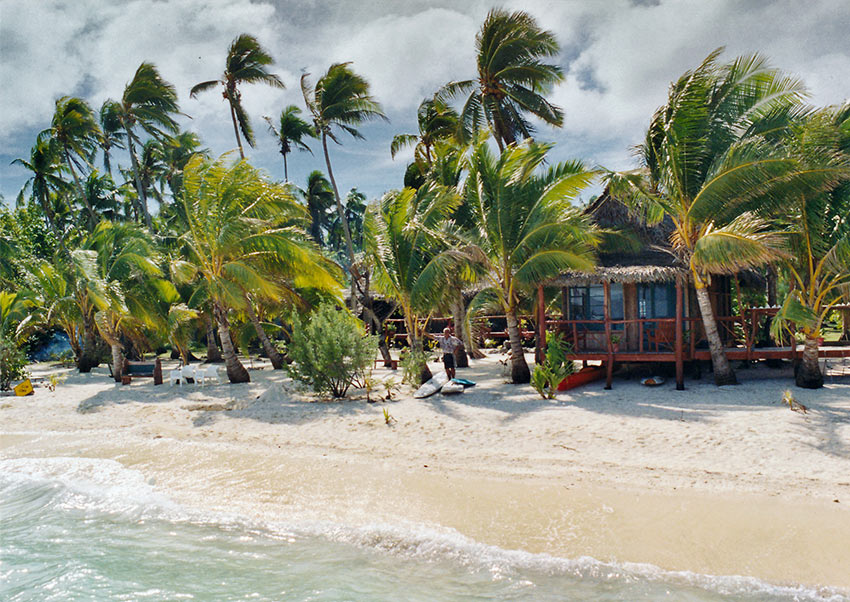
John Clayton — T-Boy writer:
One Foot Island, Aitutaki, The Cook Islands: Have you ever had one of those dreams where you’ve fantasized about a gorgeous South Seas Pacific island beach that’s surrounded by pristine, crystal clear waters so beautiful it makes you wonder if such a beach might REALLY exist somewhere in the world? Well, dear friends and fellow adventurers’ let me assure you that YES, a beach like that DOES exist. With its breathtaking and idyllic landscape, powdery white sand, warm azure waters, and the gently swaying palm and coconut trees, the intriguingly named One Foot Island is my all-time BEST BEACH in the world. One of the 22 islands in the Aitutaki atoll of the Cook Islands, it is only 2,000 feet long and about 689 feet wide. One Foot Island was, in June, 2008 in Sydney, Australia, named, by the World Travel Awards Organization, the title of “Australasia’s Leading Beach.”
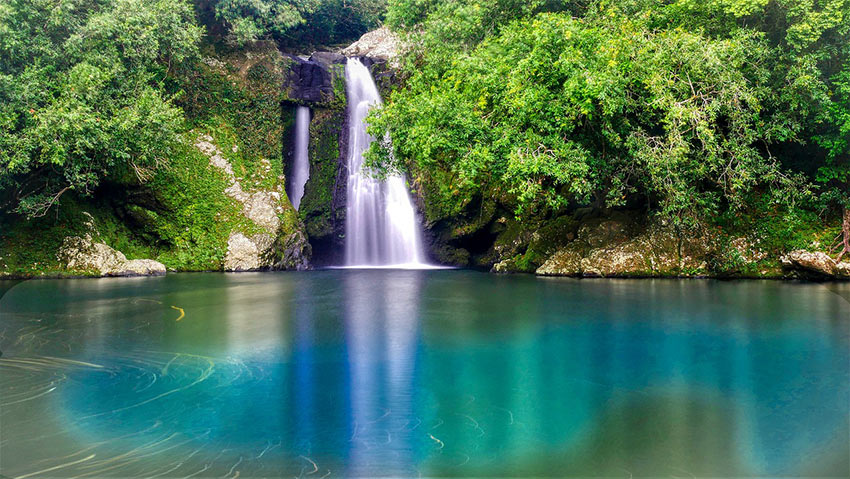
Jim Ferri — Editor of Never Stop Traveling:
Back in the 70’s, I was a freelance photographer/writer trying to eke out a living plying my craft.
Competition was tough, of course. But there was one big benefit – I could come up with a story idea and, if I got the go-ahead, I’d usually wind up getting a free air ticket (First Class, mostly) and free hotels.
As I began getting better known, a few editors began coming to me, asking if I’d go on a trip here or there to do a piece for them. Later, as my work got better known, hotels and airlines asked if I’d join them on a trip now and then.
One day the PR department of Air France called. They had launched a new route to Mauritius, a spec of an island in the Indian Ocean, and wanted to know if I’d join a small group of media that would be traveling there.
I knew it would be a really long flight – New York to Paris and then onward to the other side of the world – but I was always open to travel anywhere. I also knew I could get an open ticket and route myself back on Air France wherever I wanted to go. I went.
Mauritius was okay, nice but nothing really special, and after four days our little group dispersed to head home. I stayed around and took a flight to nearby Réunion Island, a French department in the Indian Ocean, just because it sounded cool and exotic.
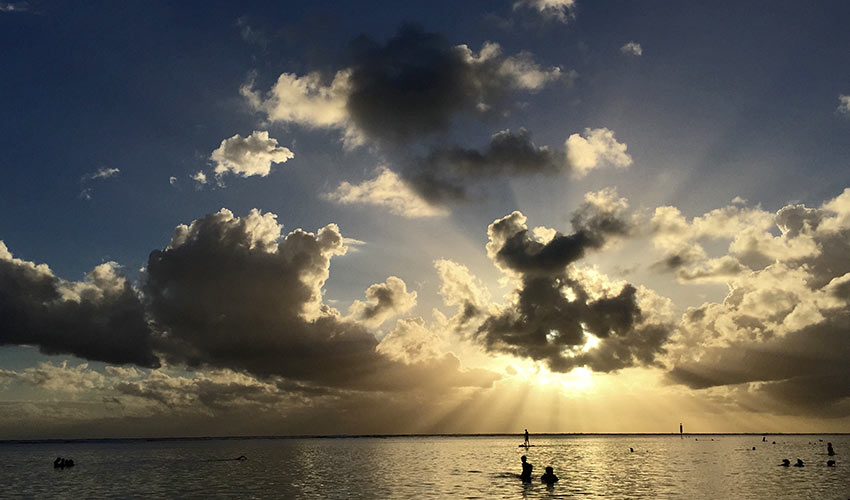
When you travel a lot, and I mean a LOT, you don’t tend to remember the nuances of the many places you visit, only those where something special happened. That’s what happened to me on Réunion.
I was moving around the island for a couple of days, photographing and carrying my normal 40+ pounds of camera gear. I don’t remember where I was, or where I wanted to get to, but I do remember it was about 10 miles off and across the middle of nowhere.
I wasn’t having much success with local transportation, so I set off walking down a wide dirt road. I was about three miles out, when under a blazing Indian Ocean sun, I realized what a stupid idea it was. Nevertheless, I kept plodding on since there wasn’t any other alternative. Then I heard a car coming up behind me.
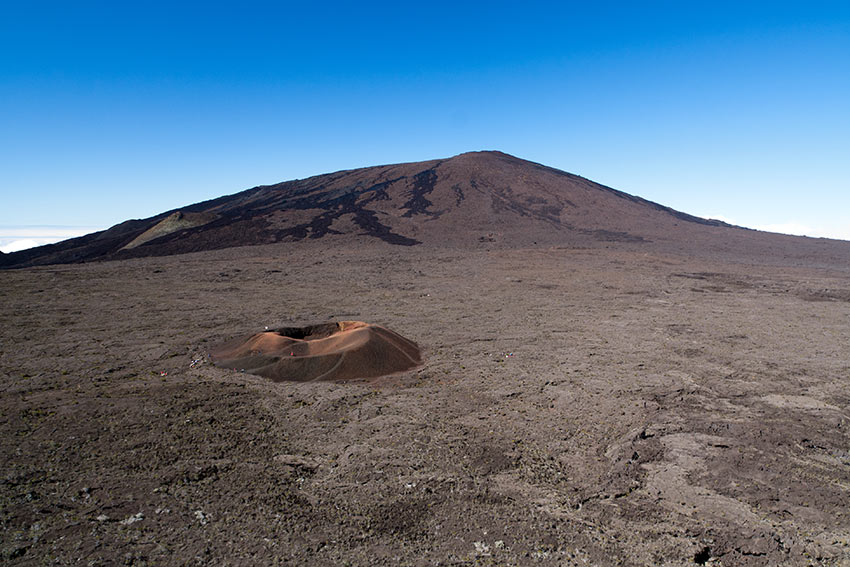
I turned and saw it trailing a plume of dust 15 feet in the air. I braced for the worst, putting the crook of my arm over my nose and mouth, and shoving my camera under my shirt.
The car stopped and a woman with a young child pulled up slowly next to me and asked if I wanted a ride. At least I think that’s what she said since I didn’t speak any French and she didn’t English.
I hopped in her car quickly and during the next half hour we each attempted to converse as best as possible…she asking me where I was going and where I was from…me inquiring about the age of her little girl…she answering three with her fingers…
That half hour on an island on the other side of the world was one of the most memorable in my life since it opened my mind to the kindness of others.
A week earlier I had left an America in turmoil… our president had resigned… there was mistrust of others… and always, as they had for years, people worried about their personal safety… always lock your doors… don’t accept rides from stranger…be careful wherever you go.
And here, on a road to only God-knows-where, a young woman was so trusting of me… something I would never see back in my native New York.
It’s my only memory of Réunion, but it’s one that’s stayed with me for my entire life.
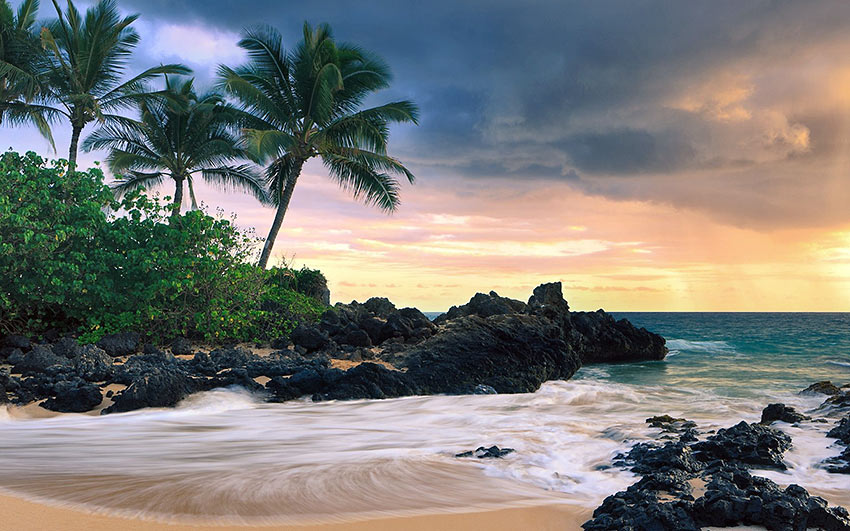
Roger Fallihee — T-Boy writer:
Secret Beach, Maui: We heard about this spot from friends. It’s called Secret Beach, also known as Pa’ako Beach. As you drive there you need to watch for a stone wall with a narrow passage. Park on the road just south of the more popular Big Beach, and continue walking south until you find a break in the wall – that’s the beach’s unofficial entrance. Walk through the passageway and about 30 yards to the beach. When we were there it was just us and a family. There are no restrooms or food. About 1/4 mile before you arrive there’s a food truck.

